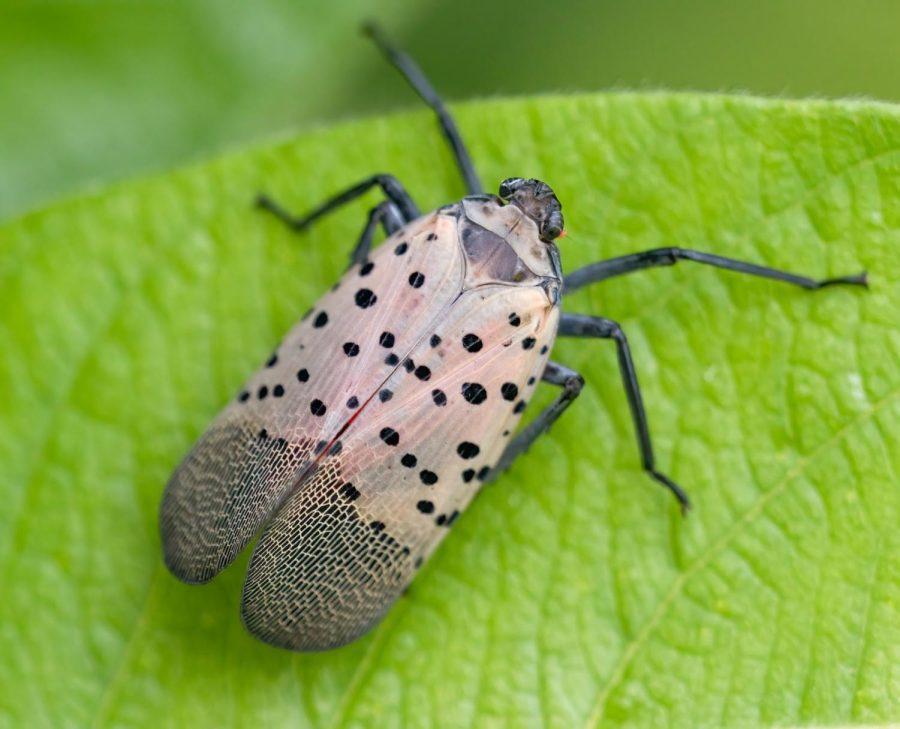Spotted Lanternflies – What You Can Do About Them
An invasive species native to Asia, the spotted lanternfly, has been spotted in large numbers across the United States, including in New Jersey. There have been numerous sightings in North Arlington, especially during autumn. The species of planthopper poses a major threat to U.S. agriculture, as well as numerous tree species.
The insect was originally introduced to Pennsylvania in 2014, believed to have been brought in after eggs were laid on a shipping boat coming from Asia to America. The first known instance of spotted lanternflies in the United States was in Berks County, Pennsylvania. Spotted lanternflies have now spread from Pennsylvania throughout New Jersey and the eastern United States.
Thankfully, they pose no immediate threat to humans as they aren’t poisonous, can’t bite and do not possess stingers. But for plant life, it’s a different story. They feed off sap from trees. They prefer the Tree of Heaven (or Ailanthus trees), but aren’t picky because they’ve also been found on grape vines, maple trees, walnuts, and almost any hardwood tree they can find. Since they feed on many agriculturally significant plants (again, such as walnuts and grape vines), and many of them often swarm on a single tree, they can cause massive damage to crops. They also excrete a substance known as honeydew as they feed, which can grow mold on the tree. They can lay their eggs practically anywhere. Due to the fact that they’re invasive, nothing threatens them. There’s no natural population control.
So, what can people do about them?
People are urged to kill any spotted lanternflies they come across, adults, nymphs and eggs alike. For adults and juveniles, the easiest way to accomplish this is to crush them, whether stomping on them or batting them with a blunt object. They usually fly rather slowly, and nymphs can’t fly at all. The egg sacks are a bit more tricky to deal with. The recommended method of extermination is to scrape them off the tree (or other surface) they are found on into a container of rubbing alcohol, though smashing them after scraping and then throwing away what remains in a plastic bag can also work. (Here you can find a more in-depth explanation on egg extermination.) If you find one in any life stage, you can report the discovery to the state. Note to take a picture of the bug/eggs before you destroy them.
The insects are easy to spot in their adult stage, if you know what you’re looking for; they are usually around an inch long, and their wings are a muddy brown with black spots, covering their entire back. The underside of their wings are a bright red.
Nymphs are black with white spots right after they hatch, and are called “early nymphs”. They have oval shaped, wingless bodies and long “snouts”. As they grow, they develop an easily recognizable red pattern on their backs, as well as become more round.
The egg sacks may be harder to spot. Newly laid eggs will be smooth, and a beige-brown color. As time goes on, they harden, and become more of a dull white color, usually cracking. Note that the eggs aren’t only laid on trees – they can be laid virtually anywhere such as on vehicles, houses, and any flat surface.
Here’s an identification chart for reference.
“Quarantine zones” have also been established. It is a criminal offense to intentionally transport any live lanternflies into or outside these zones. People are also strongly encouraged to inspect vehicles and other belongings that may be harboring spotted lanternflies before traveling through quarantine areas. It is hoped that these measures will keep lanternflies from spreading to places they haven’t yet been introduced to, as well as help discover more populations.

